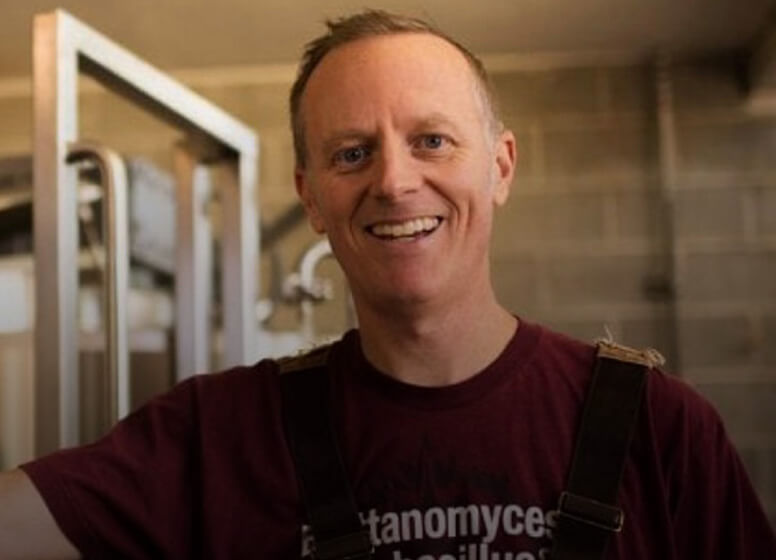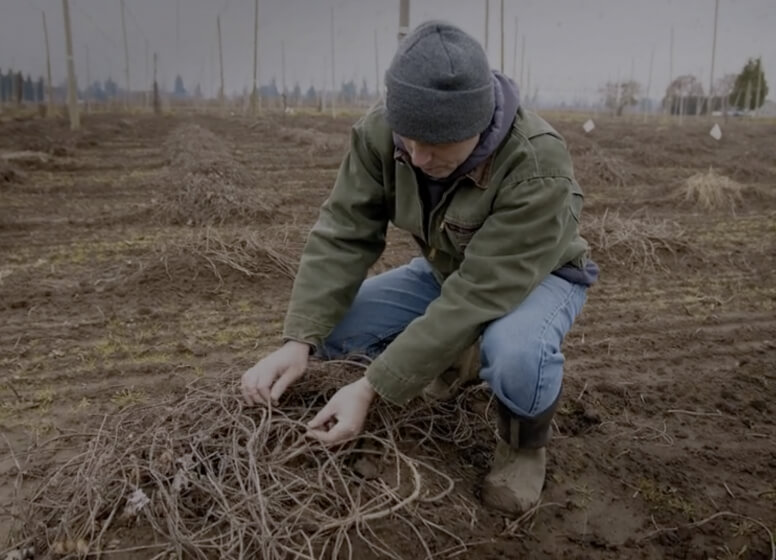Cementing success through uncompromised standards.
Both vocations require having a vision of an end product that involves mixing water with something dry; both can be physically taxing, the work conditions can be HOT, and once you get started there’s no turning back. Beer, like concrete, has a life cycle of its own that must be adhered to.
“With concrete you have a finite period of time to get the work done and it’s time conscious sort of work, and same with brewing. A major similarity is, are you prepared to work in uncomfortable conditions? Concreting can be extraordinarily hot and physically intense work in the height of summer, and you can’t stop. Brewing is not quite that extreme, but you know what it’s like when you’re on a brew deck and you’ve got the hot liquor tanks full, the mash tun’s full, the lauter tun’s full and the kettle’s full… everything’s hot,” laughs Hargrave. “I guess I’m just one of those guys… I’m probably happiest to look back after a day’s work and see something there that I made that wasn’t there before.”
Hargrave’s knack for creating new things has definitely served him well in the brewing world. Those that know craft beer, especially Australian craft beer, know Hargrave for his uber award-winning beer the Balter XPA. “We always try to lead and not follow. There were a couple of beers in Australia before I came up with XPA that were branded as XPAs, but they generally meant an extra big pale as in extra alcohol, but for me XPA meant extra pale. I wanted a beer to showcase all of those great American hops that I first started getting exposed to in 2014, but still be really drinkable and not have to make a 7% IPA to do that,” explains Hargrave. “I stripped out any Crystal malt. I wanted to keep it really pale and just sort of ‘sprung like a sports car’ is how I talk about the malt bill. Just to allow that as a platform for all this hop character that was interesting if you were into that and wanted to unpack the beer, but also you could just drink it as a beer and not have to think about it. And quite often, it’d be punching people’s buttons and ticking their boxes, and they didn’t know why.


"That’s how you get successful. It’s just what you’ve got to do — you’ve got to put yourself through the grinder and hopefully you come out the other side because you’ll come out a whole lot tougher and hopefully you’ll have built up your reputation and your beer."
SCOTTY HARGRAVE, BREWMASTER @ BALTER BREWING
Hargrave’s beers are kind of like Hargrave. If you’ve ever had a chance to sit and chat with him, it doesn’t take long to see that he’s just super likable and approachable. He’s super chill and yet super detail-oriented all at the same time. The more you chat with him, the more you want to get his take on other things. So we picked his brain on all sorts of topics including getting the inside scoop on what he’s done to help make Balter Brewing one of the hottest craft breweries Down Under.
“I’ve always had this tagline, ‘Good beer is for everyone.’ And I sort of drilled it into in the other founders when we first got started. You don’t have to know a lot about beer to be into our beer. We’ve always taken the audience along for the ride with us, and we’ve never thought that we were too cool for school.” (Key takeaway #1- Be inclusive.)
“When we started Balter, I told the guys that I was gonna brew the first million liters all by myself. Yeah, all by myself, and that’s what I did… usually in a pair of board shorts and I may not have even had shoes on!” recalls Hargrave. “I put together a brew kit and cellar that was capable of making consistent beer and that we’d be able to dial in that repeatability and reliability early on. I just really dialed in on the process, and then as I got other brewers and cellar operators into the production, I just drilled it into those guys what my expectations were and the processes that we needed to follow. It’s just one of those things where you lay down the fundamentals and do enough of the groundwork to start with a really solid base. As we’ve brought in other people, I’ve never just peeled off for six months or something. I always keep a fairly close eye on it.” (Key takeaway #2- Lay a solid foundation by really dialing in your beer and your process.)
“We’ve reinvested pretty much every cent we’ve ever made into making things better. I started with six 60 barrel tanks and now we’ve got 34, but as we had to grow, we ended up having to get a bunch of 240 barrel tanks and I made sure that when we designed them all the ratios and all the geometry proportionally was exactly the same as the first lot of tanks. And we dry hop through the tops, so when we got these tanks 20 feet in the air, we built a hop cannon and developed a pipe work system to be able to safely replicate what I started XPA off with and all of the other beers we started off with. It was just making sure that when we got bigger, XPA was still gonna be XPA in these bigger tanks, as it was in the smaller tanks. Now we’ve got a cellar that’s got thirteen 400 barrel tanks, and we did the same thing — all the hops going through the top through a hop cannon, and proportionality. It’s that attention to detail — as we’ve gotten bigger, we haven’t taken our eyes off the ball because otherwise it could get away from you and you wake up one day and this beer you can barely recognize as the one you made. XPA today is very much what it was five years ago, and it’s even more consistent now because we’ve spent several hundred thousand dollars on our lab.” (Key takeaway #3- Pay attention to detail if you want consistency.)


“I’ve gotten to know the Meddings family over the past fifteen years. They had faith in me and were very excited for me to get the opportunity to start Balter. I love those guys.”
SCOTTY HARGRAVE, BREWMASTER @ BALTER BREWING
As we’re talking to Hargrave, the reason behind the awards and the success becomes quite evident. The man just never takes his eye off the ball, and he’s super passionate about great beer! At one point, he starts reminiscing, “Sometimes you look back and go, ‘I miss the good old days, when it was just me. You could just hear the bubbling of the airlocks… there’s that sort of romance where it’s just you and the tanks, you and your beers quietly working together. But I was probably running around trying to do 75 things at once, no breakfast or lunch. My kids going, ‘Where’s dad? I haven’t seen him in a week.’”
“I think the biggest challenge when you’re staring a brewery like Balter, is knowing that it’s not just the people at work who rely on you, but also your family who rely on you to come home in one piece—at some point in time. I knew I was gonna have to go down the rabbit hole. I had to weigh up whether it would be worth it. I was the only guy in Balter who had the brewing experience, so it felt like the whole thing was on my shoulders. I’m sure it happens to every single startup brew pub that’s ever been built. You have those massive challenges of just trying to keep the damn thing alive, to keep everybody alive… keep the wolf from the door and the bank manager happy, keep the wife happy, the customers happy. As you grow, you’ve got to brew more beer, you’ve got to look after more beer, your standards are hopefully increasing all of the time… That’s how you get successful. It’s just what you’ve got to do — you’ve got to put yourself through the grinder and hopefully you come out the other side because you’ll come out a whole lot tougher and hopefully you’ll have built up your reputation and your beer.” (Key takeaway #4- Know what you’re getting into, and keep perspective.)
As we wrap up our conversation, Hargrave mentions an upcoming collab with Seattle legend Steve Luke of Cloudburst Brewing. Turns out the end product is a hazy that includes some Strata. “I first tried Strata back in 2020 after I kept seeing it pop up on Instagram. And I was really, really impressed. It had a distinct passion fruit character, it had a red berry character to it, the weed character to it, flashes of citrus here and there. It’s really distinctive, it’s so versatile — it can be the star of the show, you can use it as an assist. It’s great in straight up W. Coast IPAs, it’s great in hazies. I love Strata. The passion fruit thing is quite distinct and quite focused. It adds a sort of soft intensity and depth to a hop bill when you have it in the right spot in the right beer.”
For sourcing his Strata, Hargrave relies on his longstanding relationship with Bintani, Indie’s exclusive distribution partner for Australia and New Zealand. “I’ve gotten to know the Meddings family over the past fifteen years. They had faith in me and were very excited for me to get the opportunity to start Balter. I love those guys.”
It turns out that Hargrave’s motto is holding true — good beer is for everyone. And when you put good beer in front of people, they clearly want more. The Australian beer scene, like many markets around the globe, has exploded. ““When I first started at Sunshine Coast Brewery, I think there were something like 140-145ish breweries in the whole country (and that included the mega breweries). Now I think there are like 900. Right now, globally times are tough for brewing and the associated industries. We all face the same stuff. I don’t think it matters what industry you’re in, everybody’s riding through the storm a little bit. At least we’re in beer. I’d rather be in this game than in anything else.”
Final takeaway- Most of us have to work. If you’re lucky enough to have it related to beer, cheers for that!

